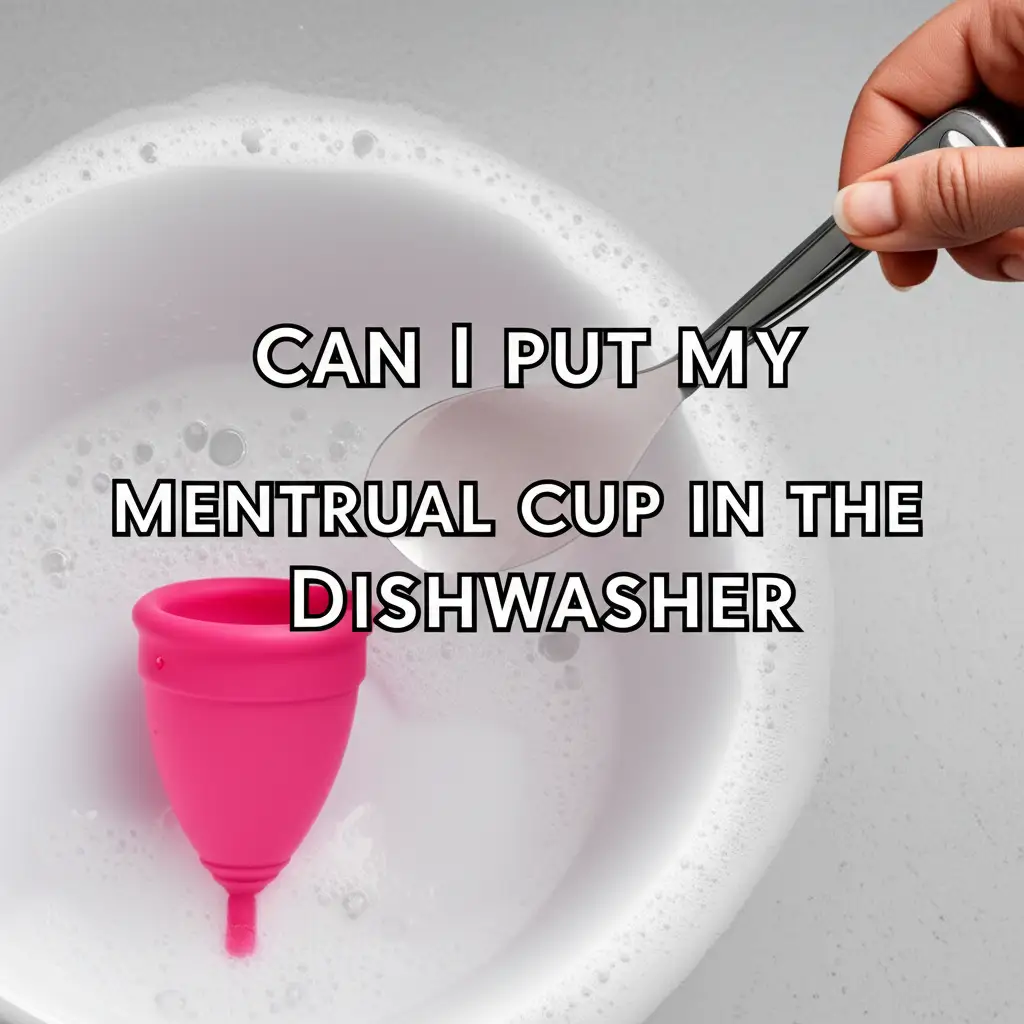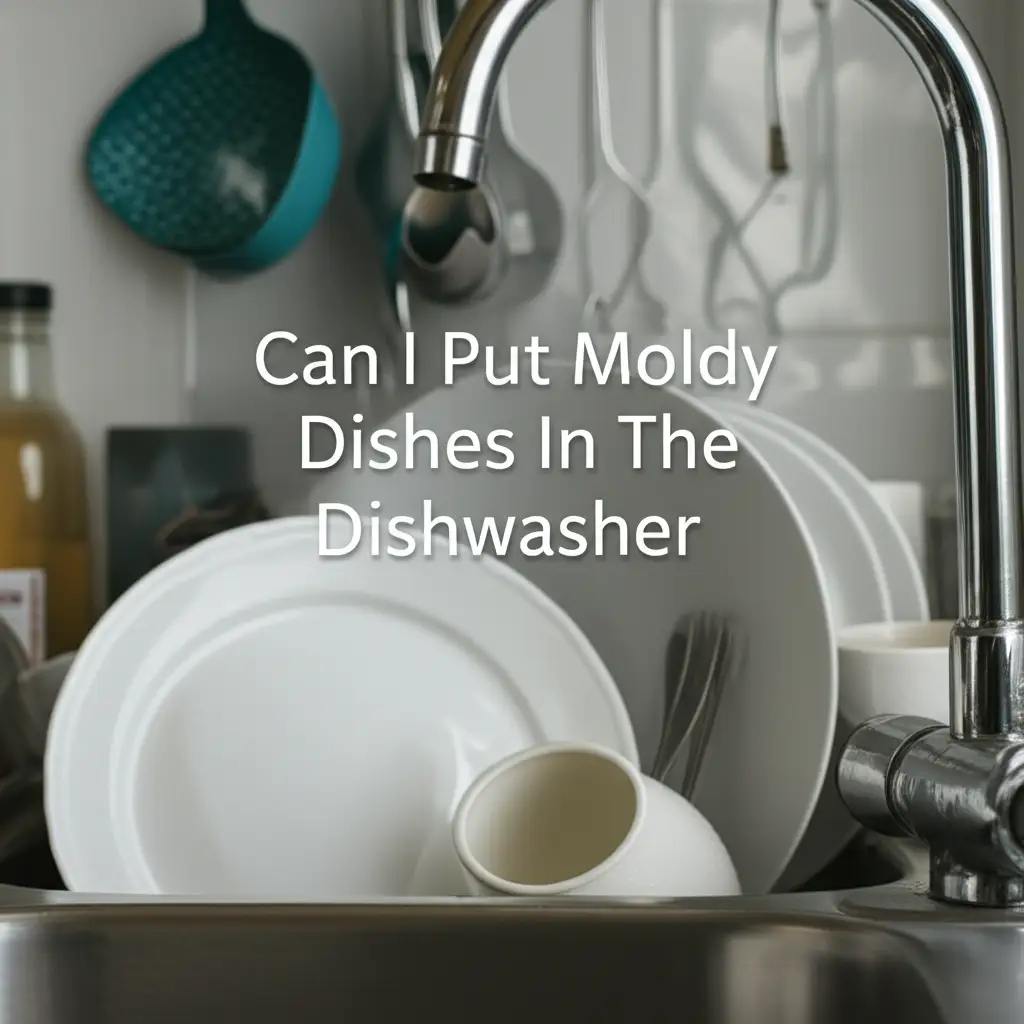· Liora Benning · Health & Hygiene · 18 min read
Can I Put My Menstrual Cup In The Dishwasher

Can I Put My Menstrual Cup In The Dishwasher: A Complete Guide
The idea of tossing your menstrual cup into the dishwasher alongside your dinner plates might seem like a brilliant shortcut. Who wouldn’t want an easy, hands-off cleaning method for something used internally? Many people consider the dishwasher a universal cleaning solution for various items. However, when it comes to personal hygiene products like a menstrual cup, the convenience factor needs careful examination. There are important reasons why this common household appliance is not suitable for your intimate health device. We will explore the material science behind menstrual cups, the potential risks of dishwasher cleaning, and the safest, most effective cleaning practices. This guide provides clear answers for proper menstrual cup care.
Takeaway
Putting your menstrual cup in the dishwasher is not a good idea. Here’s why:
- Dishwashers use high heat and harsh detergents that can damage medical-grade silicone.
- Chemical residues from detergents can remain on the cup, posing health risks.
- Cross-contamination with food particles and bacteria from dishes is a significant hygiene concern.
- Boiling water on the stove or using specialized sterilizers are safe and recommended methods.
Can You Put Your Menstrual Cup In The Dishwasher?
No, you should not put your menstrual cup in the dishwasher. Dishwashers use extremely hot water, strong detergents, and high-pressure sprays. These elements can damage the cup’s material, leave behind harmful chemical residues, and create cross-contamination risks with food debris.
Why You Should Think Twice Before Dishwashing Your Menstrual Cup
You might think a dishwasher offers the ultimate convenience for cleaning. For many kitchen items, this is true. However, a menstrual cup is a medical device designed for internal use. Its cleaning requires specific attention to hygiene and material integrity. Dishwashers use a combination of very hot water, powerful spray jets, and strong chemical detergents. These factors can all negatively affect your menstrual cup.
The high temperatures inside a dishwasher, especially during drying cycles, can be extreme. This heat can degrade the medical-grade silicone or TPE (thermoplastic elastomer) that most menstrual cups are made from. Over time, high heat makes the material sticky, brittle, or discolored. Harsh detergents are another problem. These chemicals are formulated to remove tough food stains and grease from dishes. They are not designed for intimate medical devices. Using them on your menstrual cup can leave behind residues. These residues can irritate sensitive vaginal tissues when you reinsert the cup. Always prioritize safety and material preservation when caring for your menstrual cup.
Understanding Menstrual Cup Materials and Dishwasher Effects
Most menstrual cups are made from medical-grade silicone or TPE (thermoplastic elastomer). These materials are chosen for their flexibility, durability, and biocompatibility. Biocompatibility means they are safe for contact with human tissue. These materials are also non-porous, which helps prevent bacterial growth. However, they are not invincible.
Medical-grade silicone can withstand high temperatures up to a certain point. The intense and prolonged heat inside a dishwasher, especially during the drying cycle, often exceeds this safe threshold. High heat causes the silicone to break down. This breakdown manifests as stickiness, cloudiness, or a change in the cup’s texture. The material might also become less flexible, affecting its ability to create a proper seal. This makes the cup less effective and comfortable. TPE materials are generally less heat-resistant than silicone. They are even more prone to damage in a dishwasher’s hot environment. This material degradation can shorten the cup’s lifespan. It also compromises the cup’s structural integrity, making it unsafe for use. Maintaining the cup’s original material properties is crucial for its performance and your health.
The Risks of Putting Your Menstrual Cup in the Dishwasher
The primary goal of cleaning a menstrual cup is to ensure it is hygienic and safe for reinsertion. Putting it in a dishwasher introduces several risks. These risks far outweigh any perceived convenience. Understanding these dangers helps you make informed choices about your cup care.
Hygiene Concerns: Cross-Contamination Risks
Dishwashers clean a variety of items, from heavily soiled plates to cooking utensils. They remove food particles, grease, and various bacteria from these items. When you place your menstrual cup in this environment, it becomes exposed to all of these contaminants. The dishwasher’s cleaning cycle circulates water and detergents throughout the machine. This means food debris and bacteria from dishes can easily transfer to your menstrual cup. This process is called cross-contamination.
Even if the water is hot and detergents are strong, they may not completely eliminate all pathogens from diverse food sources. Particles of old food, grease, or even mold spores from the dishwasher interior can transfer. For example, if your dishwasher needs regular cleaning, it might harbor mold. You can learn how to clean mold off dishwasher to keep your appliance hygienic for dishes. However, even a clean dishwasher is designed for dishes, not internal medical devices. Introducing such contaminants to a device meant for internal use poses a significant risk of infection. Your vaginal microbiome is delicate. Introducing foreign bacteria can lead to irritation, yeast infections, or bacterial vaginosis.
Material Degradation and Cup Damage
As mentioned, menstrual cups are made of medical-grade silicone or TPE. These materials are durable but sensitive to extreme conditions. Dishwashers operate at high temperatures, often exceeding 140°F (60°C) during wash cycles and reaching much higher during heated dry cycles. This intense heat can cause irreversible damage to the cup material. The silicone might become brittle, losing its elasticity. This compromises its ability to form a seal, leading to leaks. It can also cause the cup to become sticky or cloudy. These changes indicate material breakdown. A damaged cup might develop tiny cracks or pores. These imperfections can harbor bacteria, making proper cleaning impossible. Material damage also shortens the cup’s lifespan, meaning you would need to replace it more frequently. This defeats the purpose of a reusable product.
Chemical Residues and Health Implications
Dishwasher detergents are highly concentrated and contain strong chemicals. These chemicals include phosphates, chlorine bleaches, and harsh surfactants. They are effective at cleaning tough grease and food stains. However, these chemicals are not meant for contact with sensitive body tissues. When you use a dishwasher, these powerful detergents circulate and cling to surfaces. Even after the rinse cycle, small amounts of residue can remain. This is why you should always use the correct amount of dishwasher powder and follow product instructions.
If these residues remain on your menstrual cup, you risk introducing them into your vagina. The vaginal canal is highly absorbent. Exposure to harsh chemicals can lead to irritation, allergic reactions, burning, itching, or even chemical burns. These chemicals can disrupt the natural pH balance of the vagina, increasing susceptibility to infections. Concerns exist about long-term exposure to certain chemical compounds found in detergents, some of which may have endocrine-disrupting properties. Choosing safe cleaning methods protects both your cup and your intimate health. For example, using dishwasher liquid in a dishwasher can also leave residues. Using only gentle, body-safe soaps for your menstrual cup is vital.
Recommended Safe Cleaning and Sterilization Methods for Menstrual Cups
Proper cleaning and sterilization are crucial for menstrual cup users. They ensure hygiene, prevent infections, and prolong the cup’s life. Forget the dishwasher. There are simple, effective, and safe methods approved by manufacturers and healthcare professionals. These methods are easy to incorporate into your routine.
Boiling Water Sterilization
Boiling is the most common and highly recommended method for sterilizing your menstrual cup. It effectively kills bacteria, viruses, and fungi without using harsh chemicals. I always boil my cup at the start of each menstrual cycle and at the end. Here’s how to do it:
- Initial Rinse: First, rinse your cup thoroughly with cold water to remove any menstrual fluid. Cold water prevents stains from setting.
- Boiling Pot: Use a dedicated pot for boiling your menstrual cup. Do not use the same pot you use for cooking food. This prevents any cross-contamination.
- Submerge the Cup: Place your menstrual cup in the pot. Make sure it is fully submerged in water. Add enough water so the cup floats freely. This prevents it from touching the bottom and potentially melting or warping.
- Boil: Bring the water to a rolling boil. Let the cup boil for 5 to 10 minutes. Set a timer to ensure adequate sterilization.
- Cool and Store: Carefully remove the cup with clean tongs or a spoon. Let it cool completely before handling. Store it in a breathable pouch, usually provided with your cup, to allow air circulation.
Using Sterilization Solutions and Wipes
Some manufacturers offer specialized sterilization solutions or tablets designed specifically for menstrual cups. These are convenient for travel or when boiling is not an option.
- Sterilization Tablets: These tablets dissolve in water. You soak your cup in the solution for a specified time. Always follow the product instructions carefully regarding dilution and soaking time.
- Sterilizing Wipes: Some brands provide menstrual cup-specific wipes. These are great for cleaning your cup in public restrooms or while traveling. Ensure the wipes are alcohol-free and fragrance-free. Alcohol can dry out and damage silicone over time. Always check the ingredients list before using any wipe on your cup.
Daily Cleaning Practices
During your period, you will empty and reinsert your cup several times a day. You do not need to boil your cup every time you empty it. Simple daily cleaning is sufficient.
- Rinse with Cold Water: After emptying your cup, rinse it thoroughly with cold water. This helps prevent staining and washes away any residue.
- Wash with Mild Soap: Use a mild, fragrance-free, oil-free, and pH-balanced soap. Many menstrual cup brands sell their own gentle cleansers. You can also use a general gentle soap. Avoid harsh antibacterial soaps, fragranced soaps, or oil-based cleansers. These can irritate your vagina or degrade the cup’s material. Use your fingers to rub the soap gently over the cup. Pay special attention to the rim and the air holes.
- Rinse Thoroughly: Rinse the cup very well under running water. Ensure no soap residue remains. Any leftover soap can cause irritation when you reinsert the cup.
- Clean Air Holes: The small air holes just under the rim are crucial for the cup to create a seal. Use a small, soft brush (like a toothbrush dedicated to your cup) or a pointed object to clean these holes. Make sure they are clear of any debris or fluid.
Proper Menstrual Cup Care for Longevity and Safety
Beyond regular cleaning, proper care extends to how you handle, store, and inspect your menstrual cup. Adhering to these practices ensures your cup remains effective and hygienic for its entire lifespan. This maximizes your investment and supports your health. Taking good care of your cup prevents premature damage.
Storage Best Practices
How you store your menstrual cup between cycles impacts its longevity and hygiene. After boiling and drying your cup, store it in a breathable material. Most menstrual cups come with a small fabric pouch, often made of cotton or linen. This type of pouch allows air circulation. Air circulation is vital because it prevents moisture buildup, which can lead to bacterial or fungal growth.
Avoid storing your cup in airtight containers, plastic bags, or anything that traps moisture. This creates a humid environment where microbes thrive. Store your cup in a clean, dry place away from direct sunlight and extreme temperatures. A drawer in your bathroom or bedroom is usually suitable. Do not store it in places with high humidity, such as directly in the shower or on a damp countertop. Proper storage keeps your cup clean and ready for your next cycle.
Regular Inspection for Wear and Tear
Before and after each cycle, take a moment to inspect your menstrual cup thoroughly. Hold it up to the light. Look for any signs of damage or deterioration.
- Discoloration: While some staining is normal over time, significant, persistent discoloration might indicate material changes.
- Stickiness or Residue: The cup should feel smooth and clean. If it feels sticky or has a film, it might be degrading or not cleaned properly. This is a common issue when using harsh chemicals, which is why we don’t recommend putting items like a Nutribullet in the dishwasher if they have sensitive seals.
- Cracks, Tears, or Holes: Carefully check the rim, body, and stem for any small cracks, tears, or perforations. Even tiny cracks can harbor bacteria or compromise the cup’s seal.
- Loss of Firmness or Brittleness: The cup should retain its original shape and flexibility. If it feels softer, squishier, or unusually brittle, its structural integrity might be compromised.
- Odor: A persistent, unpleasant odor, even after thorough cleaning and boiling, can indicate bacterial growth that cannot be removed.
If you notice any of these signs, it is time to replace your menstrual cup. Using a damaged cup increases the risk of leaks and potential infections.
Tips for Stain Removal
Over time, some menstrual cups may develop slight discoloration or staining. This is usually due to iron in the blood. Staining does not affect the cup’s functionality or hygiene, but it might be visually unappealing.
- Sunlight Exposure: Place your clean, wet cup in direct sunlight for a few hours. UV rays can help bleach out stains naturally. This method is gentle and effective.
- Hydrogen Peroxide Soak: For stubborn stains, you can soak your cup in a 3% hydrogen peroxide solution. Dilute the hydrogen peroxide with an equal part of water. Soak the cup for a few hours or overnight. Rinse the cup thoroughly with water afterward and boil it before next use.
- Baking Soda Paste: Make a paste using baking soda and a small amount of water. Gently rub the paste onto the stained areas of the cup. Let it sit for a few minutes, then rinse thoroughly.
Remember, do not use harsh abrasive cleaners or brushes, as these can scratch the silicone and create surfaces where bacteria can hide.
Dispelling Common Menstrual Cup Cleaning Myths
The world of menstrual cups sometimes comes with myths, especially about cleaning. Many people seek quick fixes, but some popular ideas are actually harmful. Let’s look at what not to do.
First, do not use rubbing alcohol or hydrogen peroxide for routine cleaning. While 3% hydrogen peroxide can help with stains, it is not for daily use. Alcohol dries out and degrades silicone. It causes the cup to become brittle over time. This shortens its lifespan and compromises its integrity. These chemicals are too harsh for the medical-grade silicone. They also pose a risk of irritation if residues remain on the cup.
Second, avoid using strong antibacterial soaps or dish soap. Common dish soaps, even “gentle” ones, often contain fragrances, dyes, or harsh detergents. These ingredients irritate sensitive vaginal tissue. They also leave a film on the cup that attracts lint or can break down the silicone. Always opt for a mild, fragrance-free, oil-free, pH-balanced soap specifically designed for intimate use or menstrual cup cleaning. For similar reasons, you should avoid strong dishwasher detergents on a menstrual cup. This is why it’s important to know what to do if you put Dawn in dishwasher by mistake; strong soaps need careful handling even for dishware.
Third, never microwave your cup dry. Some people microwave their cup in water, which can be an alternative to stovetop boiling. However, microwaving a dry cup or microwaving it in insufficient water causes it to melt or warp due to extreme heat. If you choose to microwave for sterilization, always ensure the cup is fully submerged in water in a microwave-safe container and follow specific instructions. A better option is to simply boil it on the stove. This ensures consistent and safe heat exposure.
Finally, some people think a quick rinse is enough for daily cleaning. While rinsing is the first step, it is not sufficient. You must wash your cup with mild soap and water after each emptying. This removes all fluid and prevents buildup. The tiny air holes must also be clear to maintain proper suction. Neglecting thorough daily cleaning can lead to unpleasant odors, staining, and potential bacterial growth. Regular and correct cleaning prevents these issues.
When to Replace Your Menstrual Cup: Signs of Wear and Tear
Menstrual cups are durable products, but they do not last forever. Most manufacturers recommend replacing your cup every 1 to 10 years. The exact lifespan depends on the brand, material, and how well you care for it. Observing specific signs of wear and tear helps you decide when to get a new cup. Replacing your cup when it shows signs of degradation ensures continued hygiene and performance.
- Persistent Stickiness or Residue: Your cup should always feel smooth and clean after washing. If it feels sticky, gummy, or has a persistent film that cannot be washed off, it is a sign of material breakdown. This often happens from exposure to harsh chemicals or extreme heat.
- Loss of Original Shape or Firmness: A healthy menstrual cup retains its shape and has a certain level of firmness that allows it to pop open easily. If your cup seems perpetually squashed, collapses easily, or has lost its “springiness,” it will not form a proper seal. This leads to leaks and discomfort.
- Discoloration That Won’t Go Away: While some slight staining is common and harmless, deep, pervasive discoloration (especially yellowing or browning) that persists after sun exposure or hydrogen peroxide soaks indicates the silicone is absorbing pigments and degrading.
- Cracks, Tears, or Perforations: Carefully inspect the entire cup, especially around the rim, stem, and air holes. Any visible cracks, small tears, or pinholes compromise the cup’s integrity. These imperfections can harbor bacteria, make cleaning difficult, and cause leaks.
- Unpleasant Odor: If your cup retains a strong, persistent odor even after boiling or a hydrogen peroxide soak, it is time for a new one. This often means bacteria have embedded themselves into the material. It is a sign the cup is no longer hygienic.
- Any Signs of Damage from Improper Cleaning: If you accidentally put your menstrual cup in the dishwasher, you might notice immediate signs of damage like melting, distortion, or extreme stickiness. If this happens, you should replace the cup immediately. Understanding what a dishwasher can do to plastics, like considering if you can put a cafetiere in the dishwasher can give insight into the dangers for your cup.
If you observe any of these warning signs, it is better to err on the side of caution and purchase a new menstrual cup. Your health and comfort depend on using a well-maintained, intact product.
FAQ Section
Can you boil a menstrual cup in the microwave?
You can boil a menstrual cup in the microwave if it is fully submerged in water in a microwave-safe container. Place the cup in a bowl of water, ensuring the cup floats. Microwave until the water boils for 5-10 minutes. This method is an alternative to stovetop boiling, but always ensure proper submersion to prevent damage.
What soap is safe for menstrual cups?
Use a mild, fragrance-free, oil-free, and pH-balanced soap to clean your menstrual cup. Many menstrual cup brands offer their own specific cleansers. Avoid harsh antibacterial soaps, highly fragranced soaps, or oil-based soaps. These can irritate vaginal tissue or degrade the silicone material of your cup.
How often should I sterilize my menstrual cup?
You should sterilize your menstrual cup (by boiling) at the beginning and end of each menstrual cycle. During your period, between removals, a thorough wash with mild soap and water is sufficient. Over-sterilizing is not necessary and can potentially shorten the cup’s lifespan.
Can I use rubbing alcohol on my menstrual cup?
No, you should not use rubbing alcohol on your menstrual cup. Alcohol dries out and degrades the medical-grade silicone or TPE material over time. This causes the cup to become brittle, sticky, or lose its flexibility. Alcohol can also leave residues that irritate sensitive vaginal tissues.
How do I remove stains from my menstrual cup?
To remove stains, try soaking your clean cup in a diluted 3% hydrogen peroxide solution (equal parts peroxide and water) for a few hours or overnight. Alternatively, place the cup in direct sunlight for a few hours. The UV rays can naturally bleach out stains. Always rinse and boil the cup thoroughly afterward.
Can I clean my menstrual cup with vinegar?
Vinegar is not typically recommended for routine cleaning or sterilizing menstrual cups. While vinegar is a natural disinfectant for surfaces, its acidity can potentially degrade the silicone material over time. It can also leave a strong odor or residue. Stick to boiling water or mild, specialized cleansers for best results. This differs from how vinegar can be used in a dishwasher for cleaning.
Conclusion
The question of “Can I put my menstrual cup in the dishwasher?” often comes from a desire for convenience. However, as we have explored, the answer is a clear no. Dishwashers subject items to extreme heat, harsh detergents, and the risk of cross-contamination. These factors collectively pose significant threats to your menstrual cup’s material integrity and, more importantly, your intimate health. Prioritizing proper care ensures your menstrual cup remains a safe, effective, and sustainable period solution.
Embrace simple and proven methods like boiling in a dedicated pot. Use a mild, fragrance-free soap for daily cleaning. These practices are easy to implement and require minimal effort compared to the potential risks of improper cleaning. Always store your cup in a breathable pouch between cycles and inspect it regularly for any signs of wear. Your health and comfort are paramount. By following these guidelines, you can confidently use your menstrual cup for many cycles to come. Make wise choices for your body and your reusable products.
- menstrual cup care
- dishwasher safety
- period products
- hygiene tips
- sustainable period
- cup cleaning
- sterilization methods





